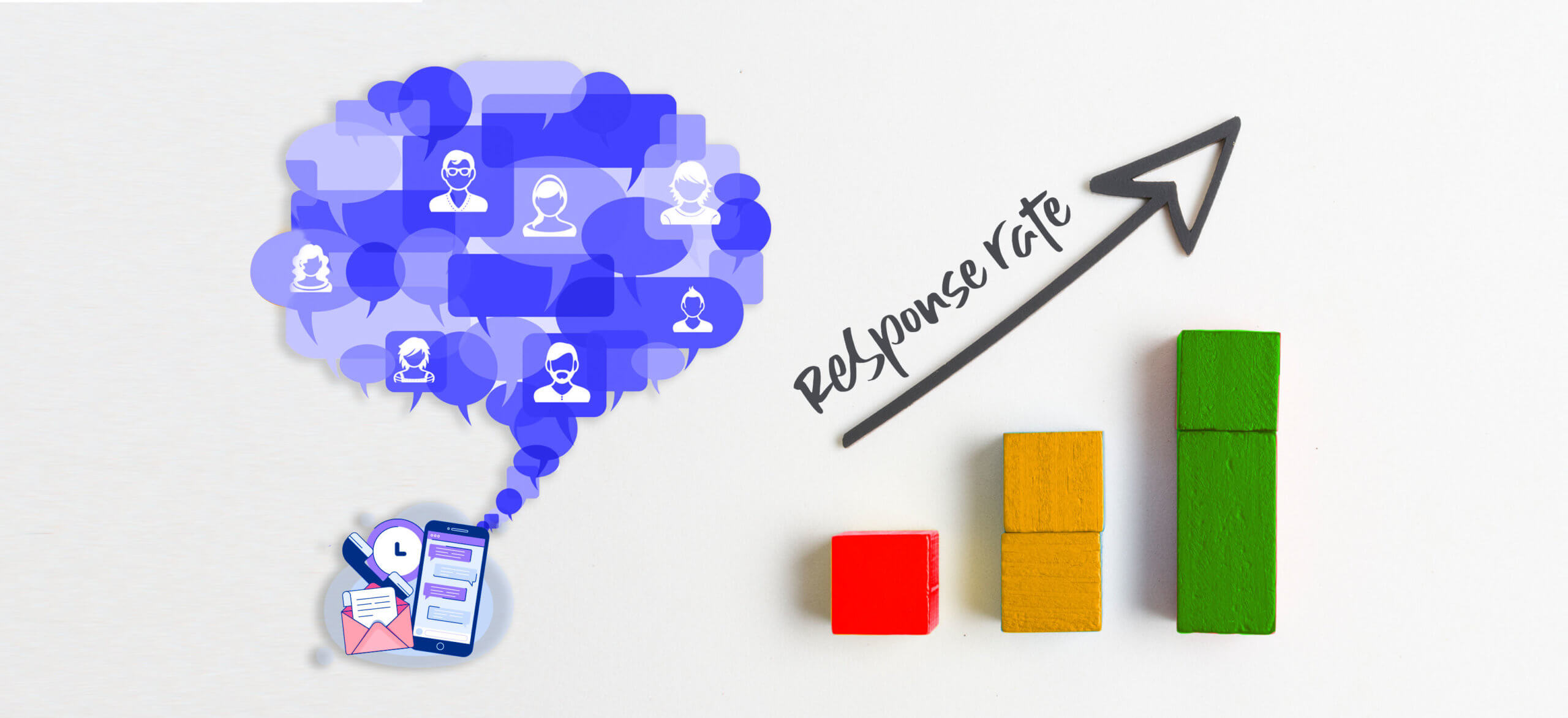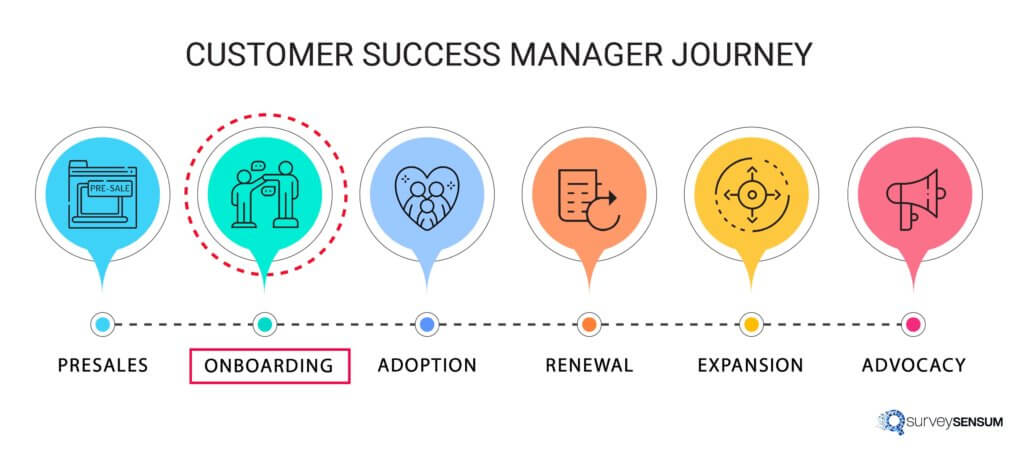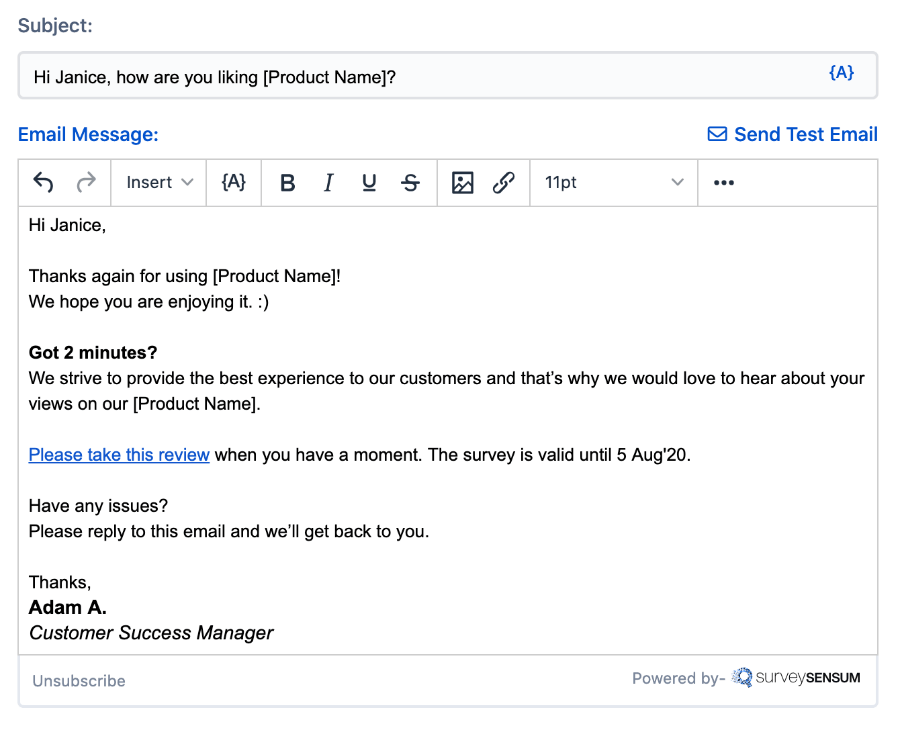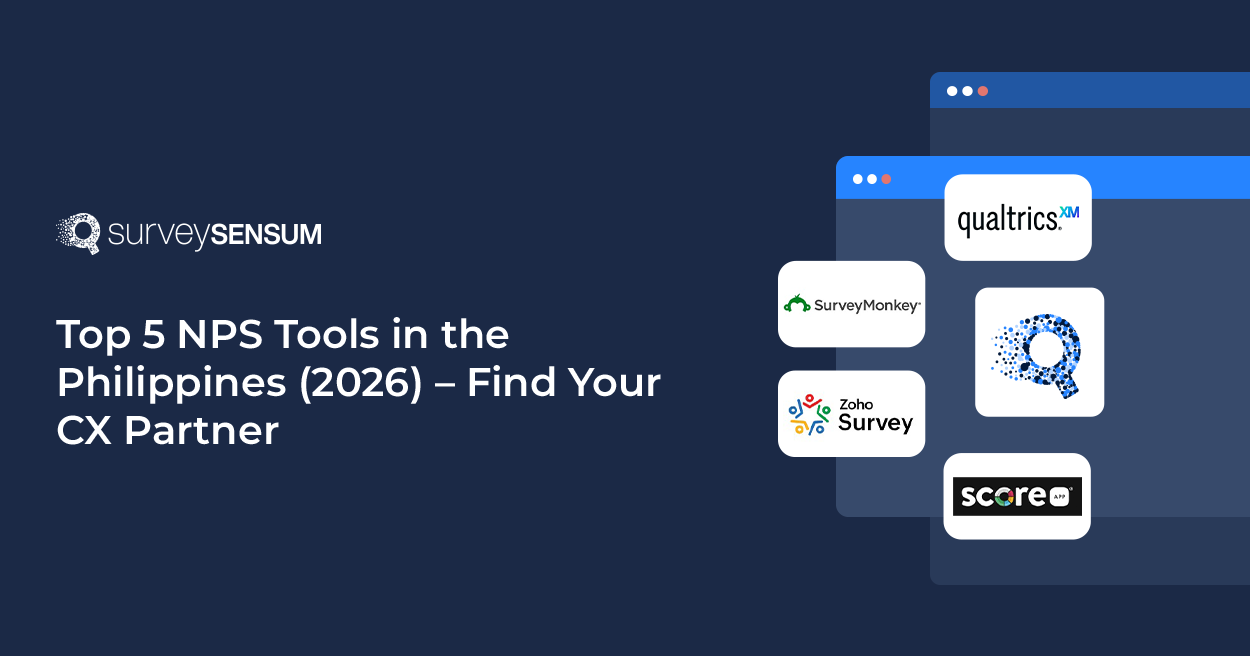

How to achieve an 80% survey response rate for your B2B SaaS?
What is a survey response rate?
What is the significance of survey response rates?
How to achieve an 80% survey response rate for your B2B SaaS?
The survey response rates are a strong indicator of relationship strength with your customers, especially with the large strategic accounts in B2B Saas.
They give you an opportunity to engage with your customers and understand what is working and not working for them. The valuable feedback gets you an accurate predictor of retention and offers you trustworthy insights that can help you in adopting the VOC program across your organization.
Therefore, an average survey response rate is not going to help you. As a B2B company, you need to aim for high survey response rates. High survey response rates not only help you analyze your relationship strength but also identify the customers that are most likely to churn. Particularly the non-responders!
SEVEN TIMES!

But before we talk about achieving higher B2B survey response rates, let’s see what survey response rates actually represent.
What is a Survey Response Rate?
Survey response rate is the number of people who responded to the entire survey divided by the total number of surveys sent. For instance, if a survey is sent to 1000 people and 400 complete it,
The survey response rate would be: 400/1000 *100 = 40%
What is the significance of survey response rates?
Survey response rates give you an insight into the reality of your respondents’/ target audience’s opinions and therefore low response rates are a no-no. A low response rate can result in sampling bias if the non-responders actually have different opinions.
For instance, you conduct an employee survey for 1000 people based on their workload. Chances are that the ones with higher workload may not respond due to lack of time and the ones with lower workload may also choose to not respond to the survey due to fear of being viewed as surplus workers.
So, mostly, the result of this survey will indicate that the workload isn’t too high nor too low. When compared to the actual situation, the result may be biased.
So, one needs to research and aim for a higher or an acceptable survey response rate.
How to achieve an 80% survey response rate for your B2B SaaS?
Getting your potential and existing customers to respond to your survey has always been the biggest challenge and it takes a multi-prong approach to achieve an 80% response rate.
After studying multiple client surveys and talking to many CX experts, we have designed and outlined this holistic approach that can help you achieve the magic number that can do wonders for your business.
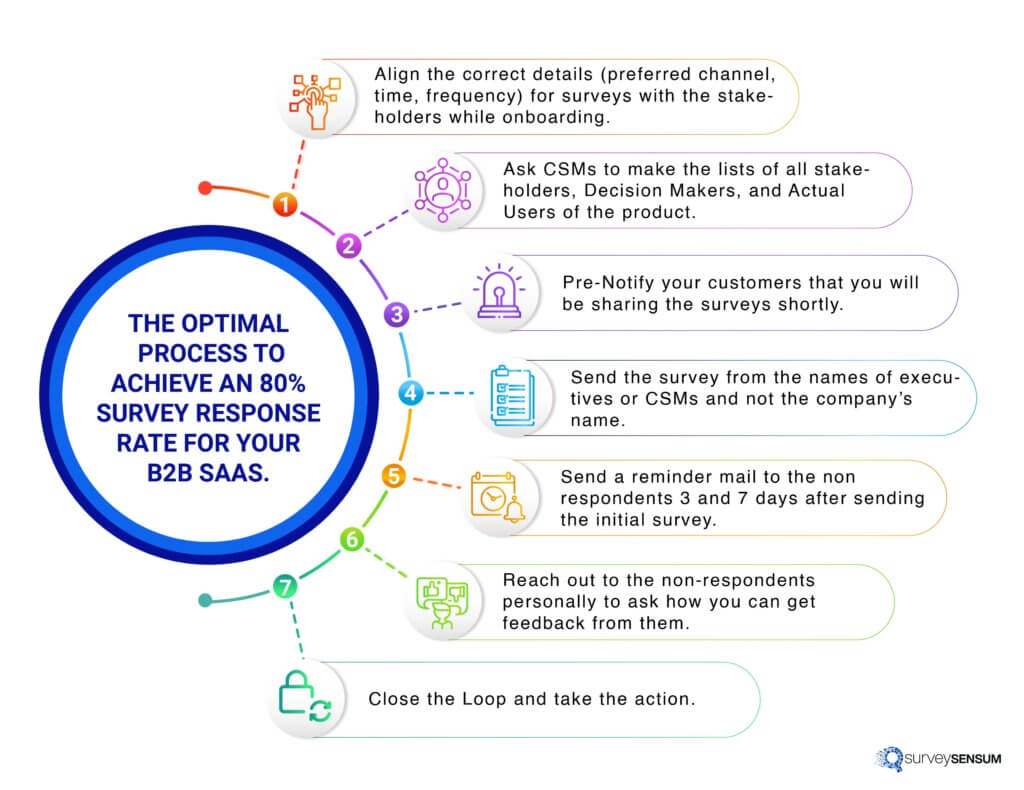
1. Set the expectations while onboarding
WIIFM (What’s in it for me)!
For every survey you send to a client, that’s what they’ll ask. So, build a relationship of trust and set expectations with them at the time of onboarding.
From the very start,
- Set the expectations.
- Inform them that you will send regular feedback requests.
- Communicate the “Why”. Share the importance of taking a survey. Tell them how their responses will help in giving a direction to the product roadmap, service experience, product experience, product adoption, and future actions.
- Agree upon the feedback frequency.
- Define the communication channels like in-app, WhatsApp, or email. This plays a key role in getting the highest level of response rate.
Share the entire process of feedback. Let the decision-makers know when and why you’ll be sending the relationship surveys and what values they can drive from it. The product users should know if the surveys will be sent at a milestone, or once in a month. They can share their concerns and your customer service managers can reach out one to one to make sure the product users are driving the full value of their investment.
At the very start, prove to them that there is something in it for them. Assure that they will be listened to. And you will take action on their feedback.
2. Segmentation – Create the relevant lists
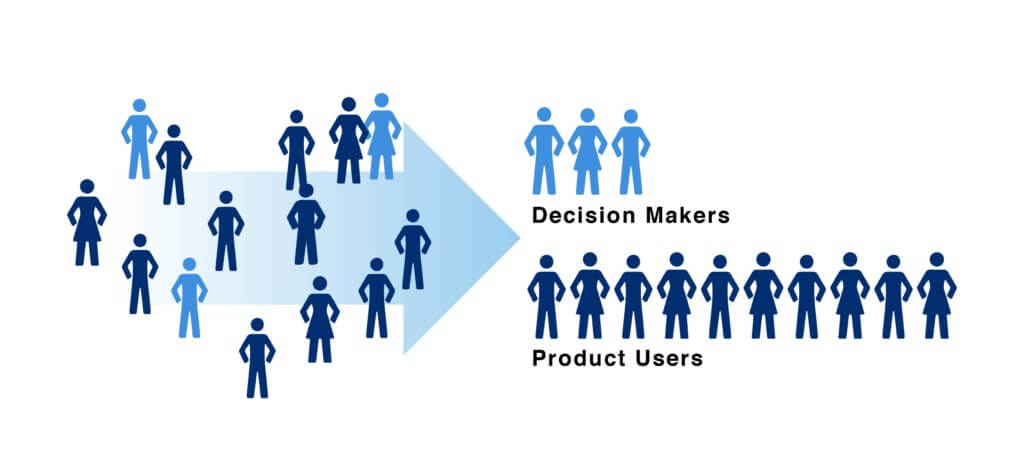 Segment your lists into more targeted groups. Relevant as this is, it is ignored by most CSM/Account managers. It is not only about the right questions but about the people you are asking those questions to.
Segment your lists into more targeted groups. Relevant as this is, it is ignored by most CSM/Account managers. It is not only about the right questions but about the people you are asking those questions to.
- Don’t download the ‘customer list’ from your CRM blindly. Why? The IDs get outdated, people (client-side) move on and new ones take their place. After onboarding, your sales team handoffs the account to the CSM and the IDs of the relevant decision-makers or the product users never make it to the list.
- Don’t use the ‘registered user list’. Why? It might include only the end-user and not the decision-maker or business influencers.
Instead, take the help of your ‘Customer Success Manager’ or ‘Account Manager’ who are in touch with their accounts to make the list of stakeholders, decision-makers, and the actual users. They have updated information!
Now the question is, who are your customers? Which survey should you send to them to get more than your average survey response rates?
- Transactional Surveys: Transactional surveys aim to collect customer feedback on a certain interaction or transaction such as product adoption, feature adoption, or product performance. Send them to the product users. Their valuable feedback helps in prioritizing product improvements and roadmap and they are the ones that become the actual advocates or influencers of your product. For instance, sending in-app surveys to product users gives a better response rate than sending emails.
- Relationship Surveys: Relationship surveys take the feedback from the customers on their overall experience with your brand. Their responses help you monitor customer health at regular intervals. It helps in measuring the relationship index between you and your customers and tells you if the decision-maker is going to buy from you again or the product user is satisfied with your product.
3. Pre-notify your customers – Heads up, we’re asking for your feedback!
Always prep your customers first before sending out a survey! Alerting them about a survey will make them more inclined towards responding. Pre-notifying your customer about the survey increases the response rates by 4% to 25%. Be it a CEO, country manager, general manager, or business head. Notifying them about a survey before inviting them for it shows that you respect their time and they’ll be more interested in pitching in.
4. Survey frequency – Don’t bombard your customers with surveys
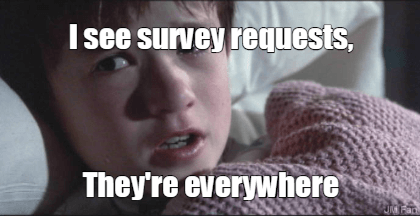
Nothing frightens loyal customers more than frequent emails. Your customers have already agreed on taking the surveys. When and how many! Stay on it.
Don’t over-survey your customers. Why annoy them with multiple surveys in a month or say a week?
One transactional survey in a month and a relationship survey in a quarter is enough. Set up automated survey throttling to stop customers from receiving multiple survey requests from all the channels.
5. Personalize your emails
a.) Set expectations in your subject line

Experiment with your subject lines as no matter what the assumptions are, people judge emails by their subject lines. 33% of the email recipients decide whether or not to open an email based on the subject line alone.
Personalize your subject line and set the expectations. Add the name of the customer, ticket number, or product name and communicate the purpose of the email. For example,
- “[FIRSTNAME], We’re looking for new suggestions.”
- “We can’t figure out how to improve the [PRODUCT]. Please help!”
- “Hi [FIRSTNAME], how are you liking [product].”
- “[YourCompanyName] Values Your Opinion.”
- “Be honest. What do you think of our new update?”
b.) Share the purpose of the survey very clearly – Don’t surprise them!

Communicate the purpose of your survey. Tell them why you are taking this survey and how it will benefit them. For example, if you’re sending a transactional survey that’s going to take 2 minutes to complete, tell them upfront how it helps them. Instead of a generic invitation like ‘Let us know what you think’ or ‘Take our survey’, ask them,
- ‘Would you help us design a better product experience for you by answering this short 2-minute survey?’
- ‘Three Quick Questions to improve our product’
c.) Communicate why, ifs, and how

Your email should communicate why your customer should take this survey, what will you do with their responses, and how much time it is going to take. Most important of all, give them a way out with an ‘Opt-out’ option or an ‘Unsubscribe’ button.
d.) Email signature – ‘From name’


Your customers are more likely to open emails from someone they know. Send surveys from the names of the CSMs who are regularly in touch with them rather than from a company-wide survey. Add a customized professional signature with a virtual headshots, at the end of every email.
Use piped-text signatures for every list.
While sending a relationship survey to the decision-makers, use executives’ signatures. In the case of a product user, use the signature of customer success managers (people who they know).
This simple and automated process helps a lot in boosting the survey response rate.
e.) Create an urgency

Encourage your customers to take the survey now by adding a deadline or using “Take the survey now!” in the Call To Action. It helps in preventing them from procrastinating and offers you quick responses. But remember to be polite!
PERSONALIZE your survey emails now – Launch a FREE survey
6. Make your survey easy and fun on the eyes
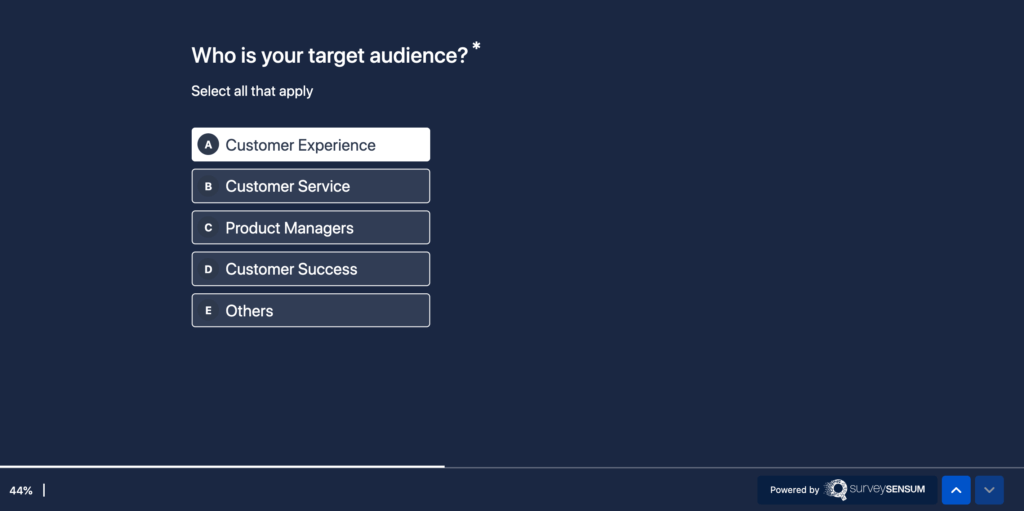
Your survey should be visually pleasing and straightforward. It shouldn’t feel like an exam. It should incorporate trust, attention to detail, and reliability to keep the respondents engaged.
- Maintain an intuitive flow of the questions. Make your survey engaging and appealing.
- Add humor, use creativity, and add fun elements as per your target group.
- Be creative with your questions. Instead of asking “One thing you’d like to see us start or stop doing?”, ask “If you were our CEO for a day what is the one thing you would change?”
- Keep your surveys short, simple, and to the point. 52% of the respondents drop out of the survey when they spend more than three minutes on a survey.
- Too big a question requires more effort on the part of the respondent. Ignore them or keep them at the end of the survey.
- Use a progress bar. It gives a clear indication of the total length of the survey and encourages respondents to complete the survey. Adding a progress bar boosts your survey responses by 12%.
- Minimize the number of screen interactions as it takes effort to click or scroll on the respondent’s part.
- Use a call to action button instead of text in your email. It increases the click-through rate by 28%.
7. Set-up reminders

Responding to your survey is not the top priority for your customer. They have their task list and responding to your survey is likely to be a low priority item on their list.
They may wait until the last day to respond or sometimes even forget!
Send reminders to the non-respondents after 3 days and 7 days of sending the initial survey email. A follow-up/ reminder email to the non-respondents increases the response rate by 15%.
Give it a try! Share a SURVEY with your consumer and send REMINDERS!!
Hope you got the 80% success rate on the response rates now!
No?
The responses have increased but haven’t touched 80% yet?
Here’s what more you can do!
8. Get your email address whitelisted

Make sure your surveys are reaching your customers! It’s possible that the IT team at your customer’s end may have blocked outside emails. Some companies, especially financial institutions block the outside email addresses.
Talk to their technical team or gain access to a system administrator and whitelist email addresses from your customer’s dedicate server. Launch your surveys from a whitelisted email address to bypass the spam filters.
9. In-line email surveys
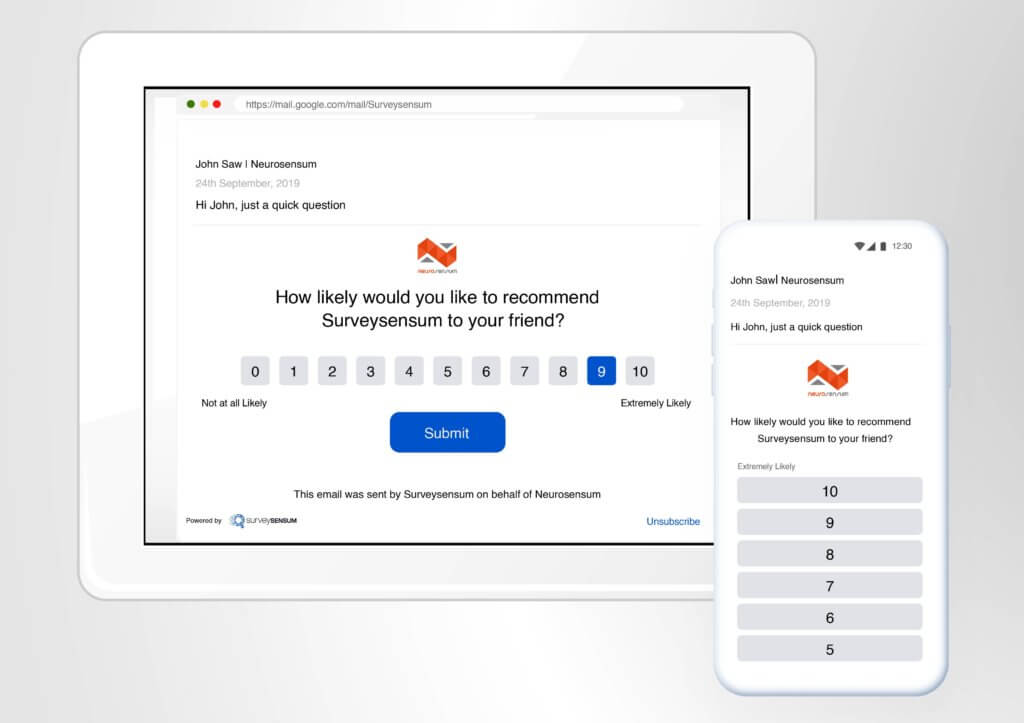
Embed the survey in the mail body itself.
Embedding the question in the body of the email itself increases the survey response rate dramatically.
It eases the customer’s efforts. All they need to do is hit the number and click on submit. Easy!
However, comparatively email survey response rates are higher when it is transaction surveys, where you need insights on product adoption, feature adoption, or product performance from the end-users. Launching an in-line email survey for the decision-makers is not the best idea as most of the time, people don’t answer the next question. The results don’t drive any value to the organization.
10. Personal outreach

Still no luck? Pick your phone and call your customers.
This call will ensure prompt action or they will just tell you why they are not responding.
Personally reaching out to your customers builds up your relationship index. Your CSM needs to know what’s bothering them. Also, it shows that you care and encourage their trust in you. This will make them more inclined to respond.
11. Follow up on the feedback and take action
IMPORTANT! Want your customer to take action every time you ask for feedback?
The most relevant step of all! – Take action on your customers’ feedback. It directly impacts the response rate and increases it by 20%
Conducting an effective survey is as important as taking action on the results. After taking the survey, if you are not following a closed-loop on it and taking the required action then it’s a failed strategy. Listen and take action for every customer’s feedback to show them they have been listened to. It reflects that you care for them and you work around their needs. Taking action on every feedback is the best way to guarantee increased responses for the future.
And…
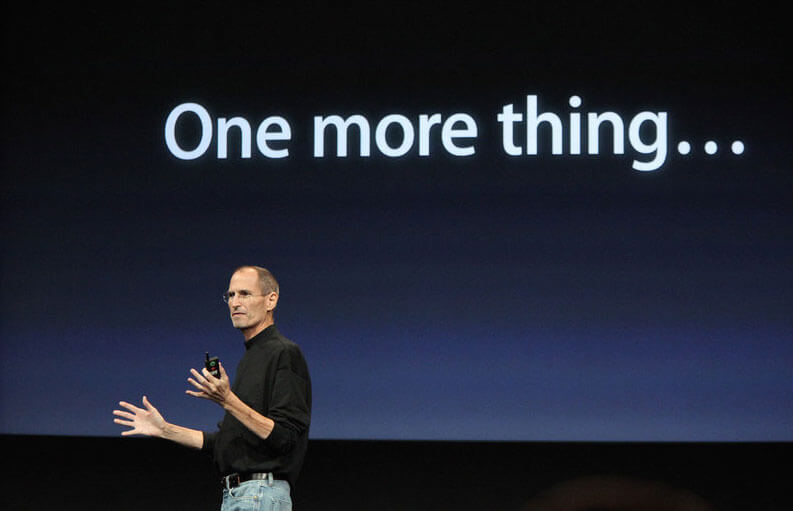
Provide value, value, and value
The survey response rate increases exponentially when the customers feel that they will gain value from responding.
And yes! Some prominent numbers you should look at!
- A personalized email survey boosts the response rates by 7.8% or more.
- Survey response rates vary with the type of survey.
- Response Time – 7 out of 8 customers respond in a week.
- Response time of the day – The best time to send B2B surveys is after 3 PM.
- Survey Length – The optimal survey length should be of 3 minutes or 5 questions (depending on the mouse clicks).
Designing a lucrative survey is no rocket science but it has to be objective with a clear agenda. The difficult part is to achieve quantitative and qualitative feedback. There are no rules or magic formulas to it. Every website, every business, every agenda is different and every respondent is unique. The critical part is to find a balance between what works for you and what works for your customers.






